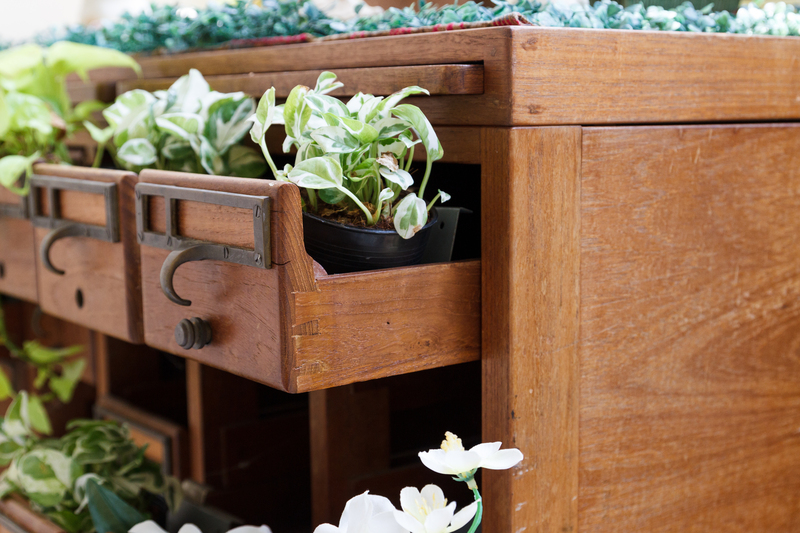Smart and Easy Ways to Upgrade Your Home's Eco-Friendliness
Transforming your house into an eco-friendly sanctuary has never been easier. With evolving technology and a growing awareness of our environmental impact, it's possible to make both small and significant changes to enhance energy efficiency, conserve resources, and reduce your carbon footprint. Let's dive into some smart and simple strategies for a more sustainable home.
Understanding the Importance of an Eco-Friendly Home
Before we delve into the techniques, it's crucial to comprehend why upgrading your home's eco-friendliness is vital. An eco-friendly home not only benefits the environment by reducing waste and saving energy but also can lower your utility bills and enhance your quality of life. Plus, it increases your home's market value as sustainability becomes an increasingly important aspect for homebuyers.

Steps to Enhance Your Home's Sustainability
1. Energy Efficiency: A Primary Focus
Improving your home's energy efficiency is a pivotal step toward eco-friendliness. Here are a few ways to achieve that:
- Install LED Lighting: Switching to LED bulbs is one of the simplest ways to enhance energy efficiency. They consume less electricity and last longer than traditional incandescent bulbs.
- Smart Thermostats: Automating your heating and cooling systems with a smart thermostat can significantly reduce energy usage, optimizing comfort while minimizing waste.
- Upgrade to Energy-Efficient Appliances: Modern appliances rated by ENERGY STAR use less energy and water, making considerable savings over time.
2. Water Conservation Techniques
Water is a precious resource, and conserving it is crucial for sustainable living. Consider these adjustments:
- Low-Flow Fixtures: Install low-flow showerheads and faucets. These can dramatically decrease water use without sacrificing performance.
- Efficient Toilets: Older toilet models can use up to five gallons per flush. Upgrading to a high-efficiency toilet can save thousands of gallons annually.
- Rainwater Harvesting: Collect rainwater for landscape irrigation. This method conserves water and reduces your reliance on municipal sources.
3. Utilizing Sustainable Materials
Materials play a significant role in your home's environmental impact. Here are some options to consider:
- Bamboo Flooring: Choosing bamboo over hardwood flooring is not only stylish but also a more sustainable option due to bamboo's rapid growth.
- Recycled Materials: Use recycled or reclaimed materials for renovations and decorations. It's an effective way to minimize waste.
- Low-VOC Paints: Opt for paints with low volatile organic compounds to improve indoor air quality and protect the environment.
4. Waste Minimization
Reducing, reusing, and recycling is a mantra of eco-friendly living. Implement these strategies:
- Composting: Start a compost bin for food scraps and yard waste. Composting reduces landfill waste and enriches soil without chemical fertilizers.
- Recycling Programs: Engage actively in your local recycling program, sorting trash carefully to ensure maximum waste utilization.
- Bulk Buying: Reduce packaging waste by purchasing items in bulk wherever possible.
5. Embrace Renewable Energy
The more we rely on clean, renewable energy sources, the more we reduce our dependence on fossil fuels. Here's how you can start:
- Solar Panels: Installing solar panels is a significant investment that can pay off in the long run by lowering energy bills and reducing reliance on grid electricity.
- Wind Turbines: For those in suitable locations, small wind turbines might be a viable option to complement solar power.
- Geothermal Heat Pumps: Using geothermal energy for heating and cooling is another effective way to harness renewable energy right at home.
6. Smart Landscaping for Savings
Your garden and outdoor areas can also contribute to your home's eco-friendliness. Consider these methods:
- Xeriscaping: Plant drought-resistant native species to reduce water consumption and resist local climatic conditions naturally.
- Shade Trees: Plant trees strategically to provide shade in summer, lowering indoor cooling needs naturally.
- Natural Pest Control: Encourage beneficial insects like ladybugs and use organic pest control methods to foster a healthier garden ecosystem.

The Benefits of an Eco-Friendly Home
An environmentally conscious approach to home improvement goes beyond saving money. It enhances indoor air quality, offers healthier living environments, and supports biodiversity. As sustainability becomes more mainstream, a green home also stands out in the real estate market, providing you with competitive advantages when you choose to sell. Plus, there's the underlying satisfaction of contributing positively to the planet.
Final Thoughts
Deciding to make your home more eco-friendly is a journey that can start with incremental changes and gradually grow with larger investments. No step is too small, and every action contributes to a healthier home and planet.
By following these smart and easy ways to upgrade your home's eco-friendliness, you'll not only enjoy the benefits of a greener home but also inspire those around you to adopt more sustainable lifestyles. Remember, the key to successful sustainability is consistency and choosing solutions that fit your unique lifestyle and home demands.
Embarking on this green journey not only shapes a better tomorrow but also enriches our lives today. Happy sustainable living!